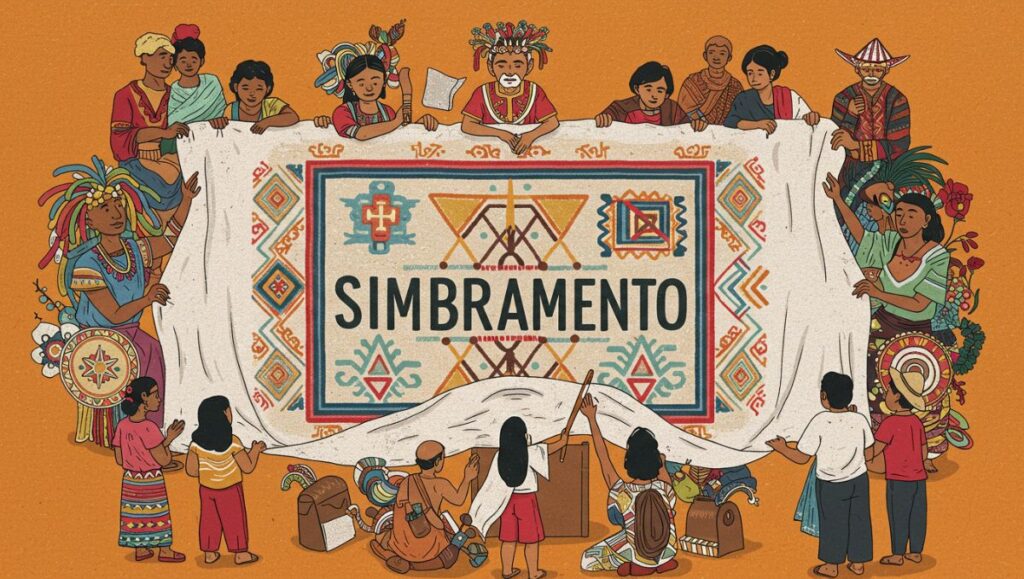Simbramento is a term that may not be familiar to many, but it holds a treasure trove of cultural significance and history. This vibrant tradition encapsulates the essence of community, celebration, and shared heritage. Rooted in various cultures worldwide, Simbramento invites us to explore its rich origins and the ways it has evolved. As we delve into what Simbramento means today, we’ll uncover how this unique observance continues to unite people across generations while adapting to the ever-changing modern landscape. Prepare yourself for an enlightening journey into one of humanity’s cherished traditions!
The Origins and History of Simbramento
Simbramento has deep roots that trace back to ancient traditions. Originating from a blend of indigenous practices and colonial influences, it reflects the cultural tapestry of its region.
Historical accounts suggest that Simbramento was initially celebrated as a harvest festival. Communities would come together to give thanks for bountiful crops and share in the fruits of their labor. This sense of unity continues to be a hallmark of the celebration today.
Over the centuries, various cultures have put their unique spin on Simbramento. It has evolved through migrations and interactions among different ethnic groups, each adding layers to its rich narrative.
Artifacts and manuscripts reveal how customs associated with Simbramento were documented through time. These records highlight not only its agricultural significance but also its role in fostering social bonds within communities across generations.
Significance of Simbramento in Different Cultures
Simbramento holds a special place in various cultures, weaving together threads of tradition and community. In some regions, it symbolizes the transition from one season to another. This connection to nature resonates deeply with agricultural societies.
In others, Simbramento represents unity among families and friends. It’s a time for gatherings where stories are shared around warm fires or communal tables. The act of celebrating together fosters bonds that span generations.
Artistic expressions also emerge during this time. Local musicians may create songs inspired by the themes of Simbramento, while dancers perform rituals reflecting their cultural heritage.
Additionally, different interpretations highlight unique values within each culture—some emphasize gratitude for harvests while others focus on spiritual renewal. This diversity reflects the richness of human experience and our desire to connect through shared traditions.
Celebrating Simbramento: Traditions and Customs
Celebrating Simbramento is a vibrant expression of community and cultural identity. Traditional festivities often include lively music and dance, reflecting the joyful spirit of this occasion.
Food plays an essential role during these celebrations. Families gather to prepare special dishes that have been passed down through generations. Each recipe tells a story, connecting people to their heritage.
Colorful decorations adorn homes and public spaces, creating an inviting atmosphere for all participants. These visuals often incorporate regional symbols and motifs unique to Simbramento.
As part of the festivities, storytelling sessions are common, where elders share tales about the origins and significance of Simbramento. This practice fosters intergenerational bonding while keeping traditions alive.
In recent years, modern interpretations have emerged alongside traditional practices. Festivals may now include contemporary art exhibitions or performances that highlight local talent within the context of Simbramento’s rich history.
How Simbramento is Observed Today
Today, Simbramento is celebrated with a blend of tradition and modernity. Communities come together to honor the occasion through vibrant festivals that showcase local culture.
In various regions, families prepare traditional meals, sharing recipes passed down through generations. These gatherings foster a sense of belonging and continuity among participants.
Artistic expressions also play a vital role in contemporary celebrations. Local artisans create unique crafts that reflect the essence of Simbramento. Markets bustle with visitors eager to purchase these handmade treasures.
Music and dance are integral components as well. Performances often feature traditional songs that narrate tales associated with Simbramento’s history, captivating audiences young and old alike.
Social media has transformed the way people share their experiences too. Online platforms allow for broader participation, connecting individuals across distances who celebrate this meaningful event in their own ways.
The Impact of Globalization on Simbramento
Globalization has woven itself into the fabric of many cultural traditions, and Simbramento is no exception. As societies connect across borders, the essence of this celebration encounters both challenges and opportunities.
Traditionally rooted in local customs, Simbramento faces influences from global trends. These changes can dilute its original meaning, as outside practices often seep into festive celebrations. However, they also introduce fresh ideas that can rejuvenate interest among younger generations.
Social media plays a pivotal role in this transformation. It allows communities to share their unique interpretations of Simbramento with a broader audience. This exposure fosters appreciation but may lead to commercialization that alters authentic experiences.
Despite these shifts, there’s a resilience within communities dedicated to preserving their heritage. Many still prioritize traditional elements while adapting new ones creatively—a blend that honors the past while embracing the future.
Conclusion: Preserving the Tradition of Simbramento for Future Generations
Preserving the tradition of Simbramento for future generations is essential. As cultures evolve, it’s vital to hold onto customs that define our identities. The beauty of Simbramento lies in its rich history and the joy it brings to communities.
Families play a crucial role in passing down these traditions, ensuring they remain alive through storytelling and participation. Young people should be encouraged to engage with their heritage actively, understanding the significance behind each practice.
As globalization continues to influence local customs, there is a risk that unique traditions like Simbramento may fade away. Communities must work together to celebrate this cultural gem while embracing modern influences. By intertwining old practices with new ideas, we can keep Simbramento vibrant and relevant.
Efforts can include organizing festivals or workshops focused on educating others about Simbra mento’s meaning and importance. These shared experiences foster appreciation among diverse audiences and strengthen community bonds.
Nurturing such cherished traditions guarantees that future generations will have the opportunity to experience the richness of their culture through celebrations like Simbra mento. It’s an investment in identity—a legacy worth preserving for years to come.







